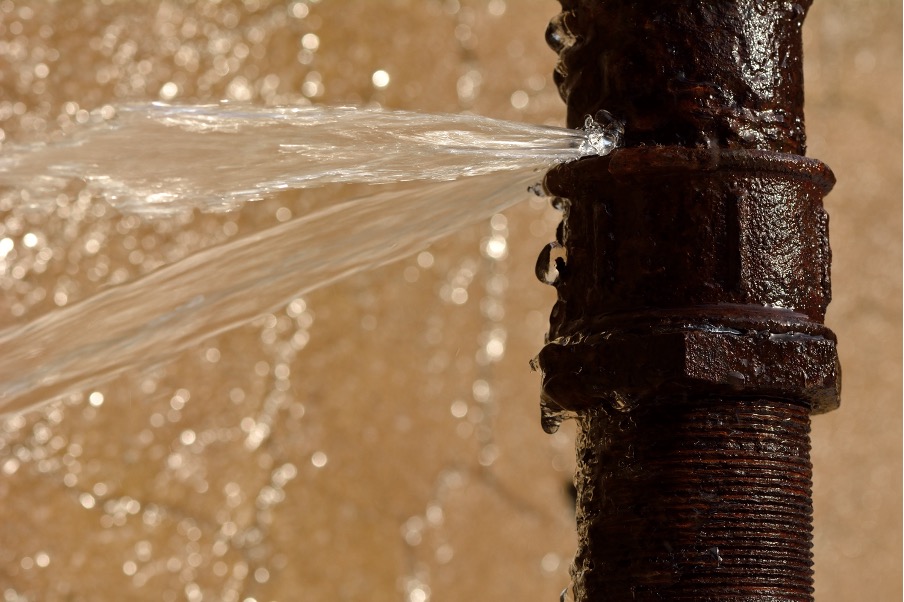We have come across this post involving Detecting hidden plumbing leaks directly below on the web and reckoned it made perfect sense to discuss it with you here.

Early detection of leaking water lines can alleviate a prospective catastrophe. In addition to conserving you cash, it will certainly lessen the aggravation and frustration. The minute you locate a leak, calling your plumber for repair work is the best option. Some tiny water leakages might not be noticeable. Right here are some hacks that help if you can not identify it with your naked eyes.
1. Take A Look At the Water Meter
Every home has a water meter. Examining it is a guaranteed manner in which assists you uncover leaks. For beginners, turn off all the water resources. Ensure nobody will certainly flush, utilize the tap, shower, run the washing maker or dishwasher. From there, most likely to the meter and also watch if it will alter. Given that no one is using it, there must be no activities. If it moves, that indicates a fast-moving leakage. Furthermore, if you spot no changes, wait an hour or two as well as check back again. This implies you may have a slow leak that can also be below ground.
2. Inspect Water Consumption
Analyze your water expenses and track your water consumption. As the one paying it, you need to observe if there are any type of disparities. If you find sudden changes, regardless of your usage being the same, it indicates that you have leaks in your plumbing system. Keep in mind, your water bill must fall under the very same range each month. A sudden spike in your expense shows a fast-moving leak.
At the same time, a stable rise on a monthly basis, even with the same habits, shows you have a slow-moving leakage that's also slowly escalating. Call a plumber to completely inspect your property, specifically if you really feel a warm location on your flooring with piping beneath.
3. Do a Food Coloring Test
When it comes to water consumption, 30% comes from bathrooms. If the shade in some way infiltrates your bowl during that time without flushing, there's a leakage in between the tank as well as dish.
4. Asses Exterior Lines
Don't fail to remember to inspect your outdoor water lines too. Should water leak out of the connection, you have a loose rubber gasket. One small leakage can throw away tons of water and also increase your water costs.
5. Evaluate the scenario and check
Property owners must make it a routine to examine under the sink counters and also inside closets for any bad odor or mold development. These 2 red flags indicate a leak so timely focus is called for. Doing routine assessments, also bi-annually, can conserve you from a major problem.
A lot more notably, if you know your home is already old, keep a watchful eye on your heating units, hose pipes, pipelines and so on. Look for discolorations as well as compromising as the majority of devices and also pipes have a life expectancy. They will certainly likewise normally wear away because of deterioration. If you think leaking water lines in your plumbing system, do not wait for it to intensify. Call a professional plumber right away so you don't end up with a dreadful mess in your home.
Early discovery of dripping water lines can mitigate a potential disaster. Some tiny water leaks may not be visible. Checking it is a surefire way that helps you discover leakages. One little leakage can lose heaps of water as well as surge your water expense.
If you suspect leaking water lines in your plumbing system, do not wait for it to intensify.
WARNING SIGNS OF WATER LEAKAGE BEHIND THE WALL
PERSISTENT MUSTY ODORS
As water slowly drips from a leaky pipe inside the wall, flooring and sheetrock stay damp and develop an odor similar to wet cardboard. It generates a musty smell that can help you find hidden leaks.
MOLD IN UNUSUAL AREAS
Mold usually grows in wet areas like kitchens, baths and laundry rooms. If you spot the stuff on walls or baseboards in other rooms of the house, it’s a good indicator of undetected water leaks.
STAINS THAT GROW
When mold thrives around a leaky pipe, it sometimes takes hold on the inside surface of the affected wall. A growing stain on otherwise clean sheetrock is often your sign of a hidden plumbing problem.
PEELING OR BUBBLING WALLPAPER / PAINT
This clue is easy to miss in rooms that don’t get much use. When you see wallpaper separating along seams or paint bubbling or flaking off the wall, blame sheetrock that stays wet because of an undetected leak.
BUCKLED CEILINGS AND STAINED FLOORS
If ceilings or floors in bathrooms, kitchens or laundry areas develop structural problems, don’t rule out constant damp inside the walls. Wet sheetrock can affect adjacent framing, flooring and ceilings.
https://www.servicemasterbyzaba.com/blog/how-to-detect-water-leakage-in-walls/

I stumbled upon that piece on Leaking water lines while scouting around the internet. Are you aware of another person who is fascinated by the niche? Feel free to promote it. Thanks so much for going through it.